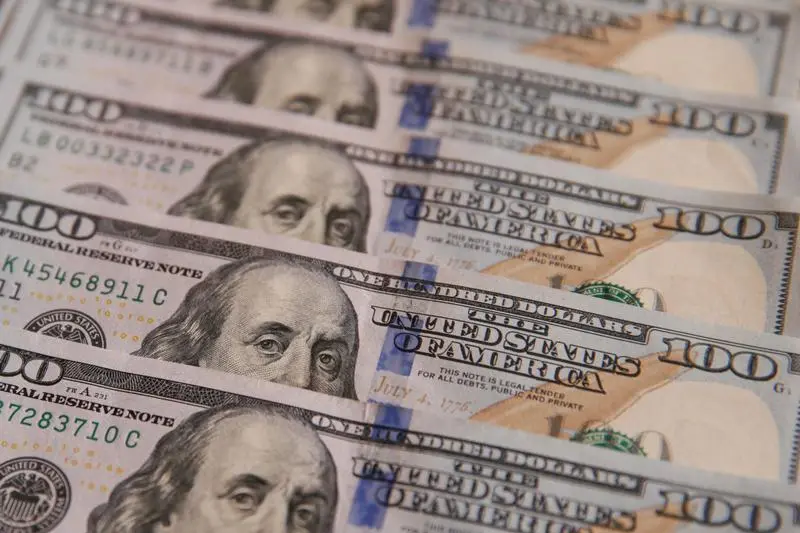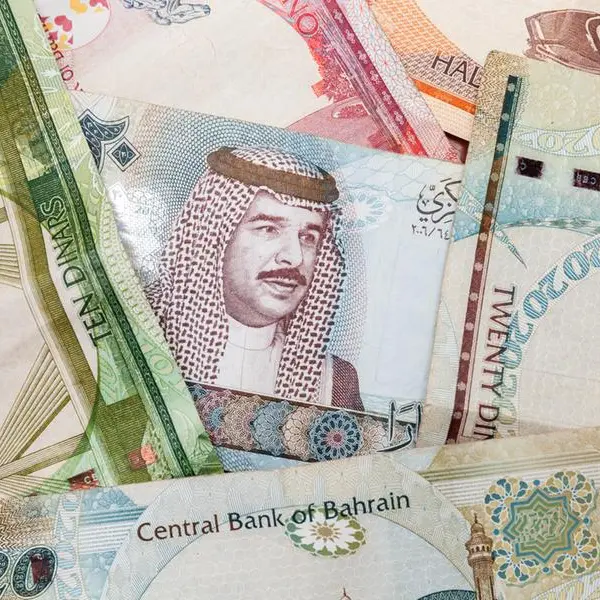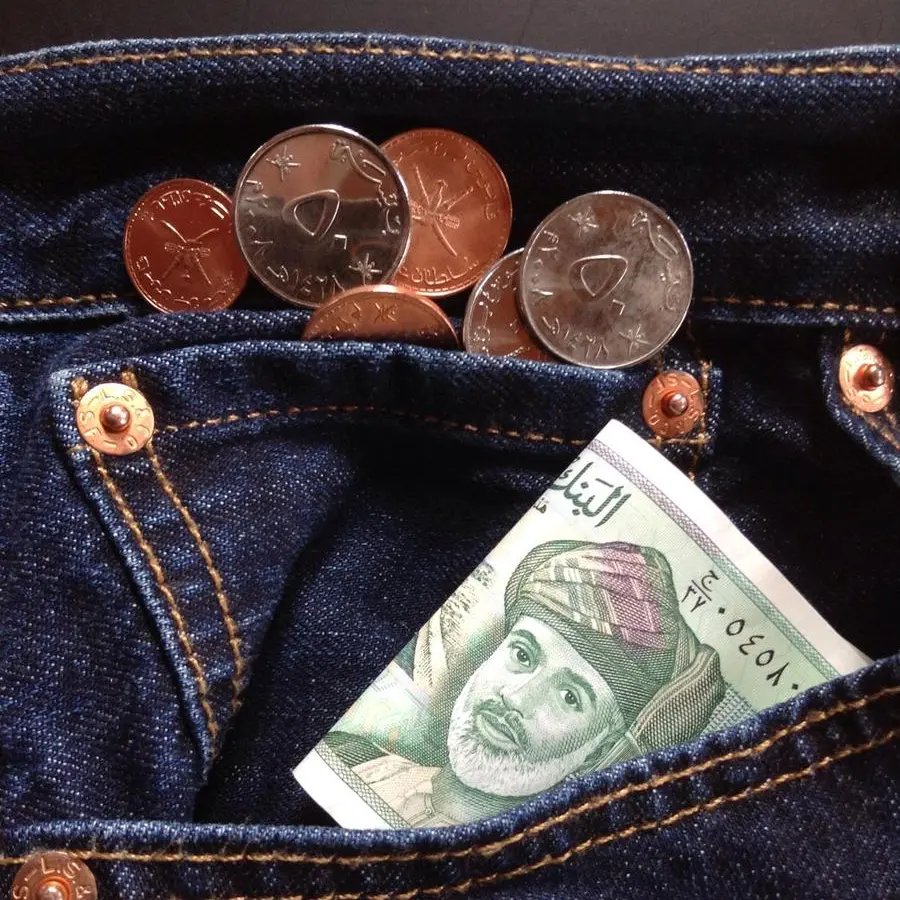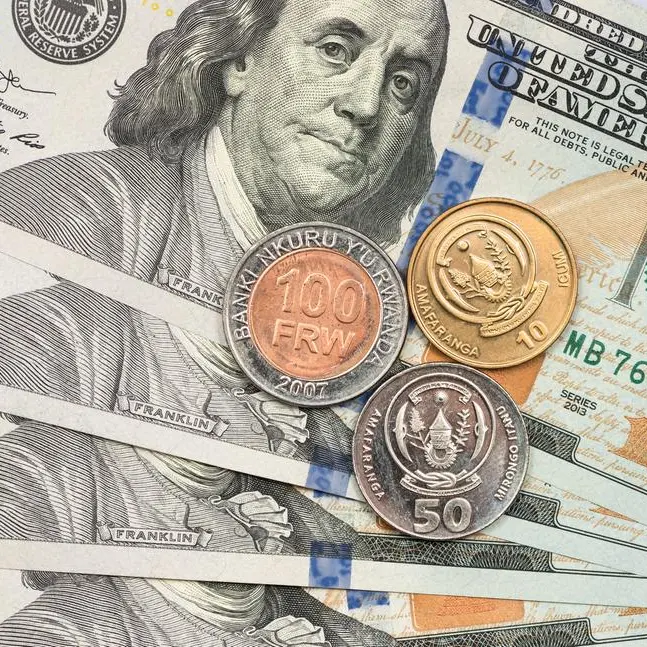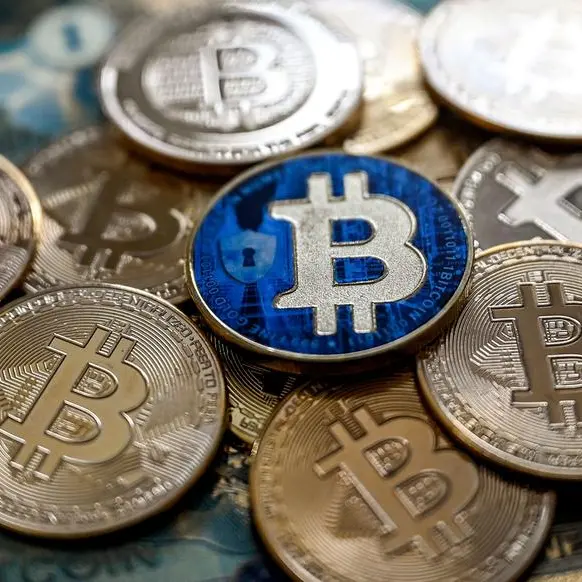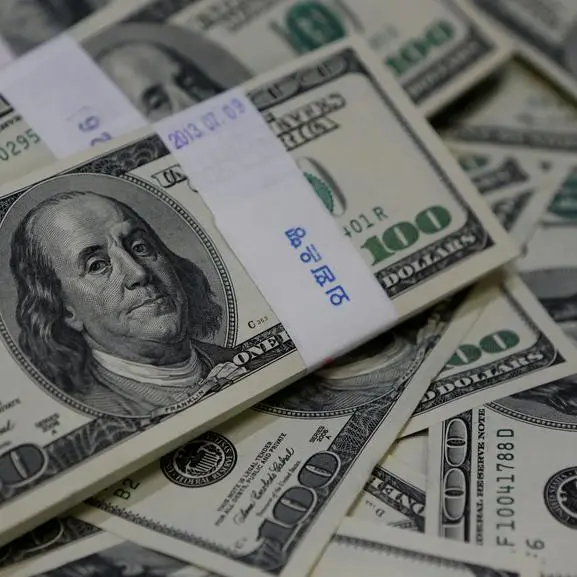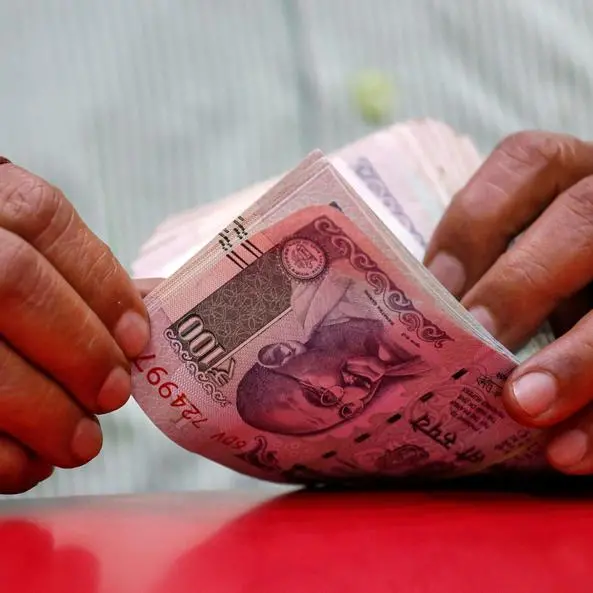PHOTO
U.S. 100 dollar banknotes are seen in this picture illustration taken in Kiev, Ukraine, October 31, 2016. Image for illustrative purposes. Reuters/ Valentyn Ogirenko.
The U.S. dollar hit more than a one-month high on Monday as investors sought a safe haven due to concerns about China's economy, while traders were on the lookout for Japanese government intervention after the yen fell to its lowest level since November.
The dollar index, which tracks the currency against its major peers, was up 0.26% to 103.15 on Monday, the highest level since July 7.
Sterling was last down 0.26% to $1.266, while the euro was 0.28% lower at $1.092.
Analysts said investors were buying the safe-haven dollar over concerns about the health of the global economy, particularly China.
They also pointed to a recent rise in U.S. bond yields on the back of persistent strength in the country's economy, which has supported the currency. The U.S. 10-year Treasury yield was trading at around 4.18% on Monday, just shy of the nine-month high touched last week.
A source told Reuters that Country Garden, China's largest private developer, is seeking to delay payment on a private onshore bond for the first time, in a fresh sign of stress in the sector.
Meanwhile, two Chinese listed companies said over the weekend that they had not received payment on maturing investment products from asset manager Zhongrong International Trust Co.
"High U.S. bond yields and what seems to be a deteriorating environment in the Chinese financial sector are weighing on risk assets," Chris Turner, head of markets at ING, said in emailed comments.
He said the dollar is likely to stay strong "unless Chinese authorities can surprise with some powerful stimulus measures".
Japan's yen was trading at its lowest level since Nov. 10 at 145.36 per dollar, with the dollar up 0.29% against the currency. A move to around 145.2 in the Asian session was quickly reversed.
The Bank of Japan has stuck to its ultra-loose monetary policy as other global central banks hiked interest rates, making returns in other countries look more attractive and weighing heavily on the yen.
Japan intervened in currency markets last September when the dollar rose past 145 yen, prompting the Ministry of Finance (MOF) to buy the yen and push the pair back to around 140 yen. The yen is down nearly 10% against the dollar for the year.
"Lack of verbal intervention so far suggests that the patience level of Japanese authorities may have gone up after the latest tweak to monetary policy and the disinflation trends in the United States," said Charu Chanana, a market strategist at Saxo Markets.
"Still, traders are potentially cautious of that 145 handle."
The Australian dollar slid to its lowest level since May at $0.6456 and was last down 0.33% at $0.648. The currency is often seen as a proxy for investor sentiment about China.
Russia's rouble fell past 100 per U.S. dollar on Monday, driven in large part by the Russian current account surplus shrinking sharply as energy export revenue dropped and government spending on the Ukraine war remained high.
Economic data could move currencies later in the week.
Investors will scrutinise Chinese industrial output and consumer spending data on Tuesday, before minutes from the latest U.S. Federal Reserve meeting on Wednesday. British inflation figures are also due on Wednesday.
Japanese GDP data is due on Tuesday, ahead of inflation figures on Friday.
(Reporting by Harry Robertson in London and Ankur Banerjee in Singapore Editing by Susan Fenton, Kirsten Donovan and Paul Simao)
